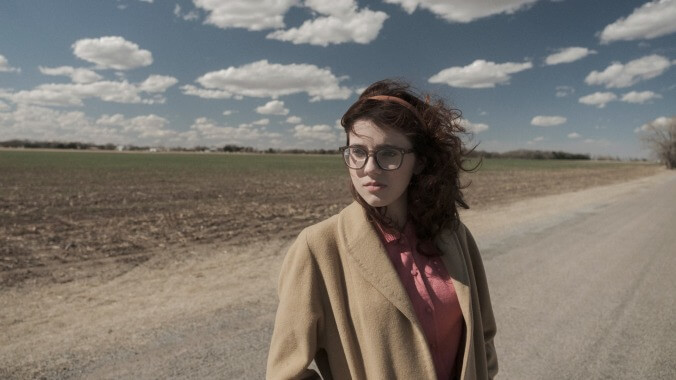The Oklahoma teen drama To The Stars aims for subtle but lands on lukewarm


The rural 1960s Oklahoma of To The Stars is defined by its empty space. The skies are vast, and the fields fallow. The roads are dusty, and so little trafficked that each passing vehicle feels momentous, like a new life approaching on the horizon. And that’s kind of how it happens for Iris Deerborne (Moonrise Kingdom’s Kara Hayward), a timid teenager who’s being tormented by hooting jocks in a pickup truck along her path to school one morning when foul-mouthed, fearless city girl Maggie Richmond (Liana Liberato) comes to her rescue in a brand-new car. If their meeting feels like magic, it’s the sleight-of-hand kind, as writer Shannon Bradley-Colleary and director Martha Stephens embark on a love story so subtle, it isn’t really a love story at all. In some hands, that would be intriguing. Here, however, it’s just lukewarm.
After that fateful meeting on the side of the highway, Iris and Maggie strike up a friendship based on their mutual propensity for sneaking out in the middle of the night to go swimming at a nearby pond. Their sleepy burg of Wakita, Oklahoma, is typical of small-town America, in that its wholesome milk-fed exterior masks the rotten scent of acrid gossip and bitter dissatisfaction—embodied here in the film’s supporting cast of drunken housewives and their bitchy cheerleader daughters. Both pose real threats to the reckless Maggie, whose made-up tales about her father’s career as a photographer for Life magazine are the least consequential of her lies. But there’s no reckoning without a few transgressions first, and Iris picks up some of her new friend’s confidence and popularity as they skip class, drink liquor, and make inroads with the popular clique at school.
With a few tweaks, To The Stars would blend in nicely with the well-intentioned, similarly minor fare that often populates LGBTQ film festivals. But the script swerves away from its otherwise conventional narrative just when you think it’s about time for these two lonely outcasts to find love with each other—again, something that could have been a positive with a more finessed or inspired execution. It may seem counterintuitive to wish that a film could have leaned more into the expected, but if To The Stars is willing to engage in the old trope of everyone noticing a formerly shy girl once she takes off her glasses and changes her hair, then why not let Iris and Maggie fall in love?
It’s an especially frustrating turn given that much of To The Stars plays like a junior version of Donna Deitch’s lesbian classic Desert Hearts, all white gloves and implications. Visually, Stevens and production designer Jonathan Guggenheim build a reasonably convincing facsimile of 1960, enhanced by a washed-out color palette that gives the midcentury furnishings and fashions the aura of a faded photograph. That’s in contrast to the version of the film that played at Sundance in 2019, which was presented in black and white; this stylized change does add an element of visual interest to the film, but can’t wholly compensate for its narrative shortcomings.
Ultimately, To The Stars suffers from a few too many underdeveloped themes—like an obscure comment on the trappings of femininity that, ironically enough, dissipates after that fateful makeover—and haphazard plot elements to truly absorb the viewer into its world. Similarly, although its supporting cast boasts the likes of Shea Whigham, Tony Hale, and Malin Akerman, the performances lack the intuitive spark that can make otherwise flawed material engaging. There’s something sweet about this film’s modesty, but without other flavors to enhance it, sweetness can also be quite dull.